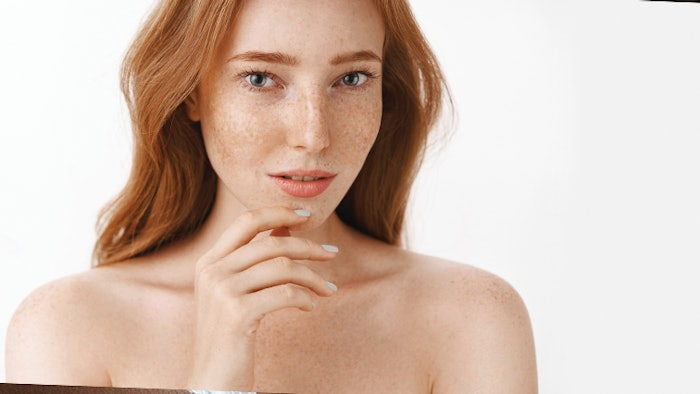
Contrary to what is often believed, individuals with red hair and freckles did not originate in Scandinavia, Ireland or Scotland, but instead in central Asia. History depicts numerous regions throughout the world that have exhibited individuals with red hair and freckles, pink or even red hued complexions including the Slavic region, the Volga region in Russia, Eastern Europe, Italy, Morocco, Algeria and all regions of Asia.
Red hair has also been discovered in ancient humans around 30,000-80,000 years ago aligned to the early migrations out of Africa. Early scientific concepts believed that red hair evolved to help people produce vitamin D in climates that were cold with little sunlight.1 Today, the modern geographical representation of both red haired and freckled individuals are recorded at their highest occurrence throughout the northern and western countries of Europe. Ireland claims the highest number of redheaded individuals per capita at 10%, followed by Great Britain and Scotland. Approximately 6% of the Scottish population have red hair, with the highest concentration of red head carriers in the world found in Edinburgh, making it the red head capital of the world.2
Red hair has been described in illuminating tones of auburn, ginger, deep red, rose gold, deep ginger and strawberry blonde, and there have been as many as 50 shades of red hair celebrated in imagery at international Redhead Festivals.3 Folklore, fable and mystique have captured the beauty and persona of red-tressed women. Redheaded maidens have been depicted in great works of art as goddesses, muses and the like: “The Soul of the Rose” by pre-Raphaelite artist John Waterhouse (1872-1916) captures the romanticism of the period and pays homage to ultra-femininity, roses and red tresses.
Related: 5 Myths of Redheads’ Skin Exposed
The Science of Freckles
Freckles are as unique as the individual who has them! No one is born with freckles, no two freckles are the same, not all redheads have freckles, and any ethnicity can develop them. Skin freckles, or ephelides, are variable, hued, pigmented lesions that may be yellow, tan, light brown, reddish, brown or brown-black, and render darker than the surrounding skin they appear on. Ephelides appear in early childhood, are most visible in summer, may fade with age, and are generally associated with lighter Fitzpatrick skin types with reddish blonde or red hair. They have a defined macule border and coloration characteristics that distinguish them from the surrounding non-freckled skin.
Freckles are said to contain more dendrite’s and contain about 40% fewer melanocytes per square millimeter than the adjacent skin. One pathology study showed that the rete ridges of ephelides are elongated and clubbed, and that there is a general increase in melanocytes along the rete peg ridges, with increased melanin in the basal epidermal unit. Melanocytes are significantly more frequent in ephelides than in non-freckled areas, and electron microscopy showed that ephelides’ melanocytes contain multiple large melanosomes characteristics of dark-skinned individuals, whereas non-freckled areas contain fewer, smaller and less-pigmented granules. This suggests that ephelides have melanocytes which exhibit two types of behavior, namely highly pigmented melanocytes of ephelides with large melanosomes, and less-pigmented melanocytes with smaller melanosomes in non-freckled areas. Why the melanocytes behave differently in the two areas of the same individual is not clear.
Continue reading about decoding the redhead factor in our May Digital Magazine...
Erin Madigan-Fleck, NMD, CDT, LMC, LEI, has more than 35 years of experience in the aesthetic and natural health industry. She is a naturopathic medical physician with a private practice, Naturophoria, in Atlanta. She is a member of the American Society for Nutrition and serves on the Education Commission for the International Association for Applied Corneotherapy. She the owner and founder of DermaEducationTV Post Graduate Esthetic Training and the Scientific Esthetics Symposium.











